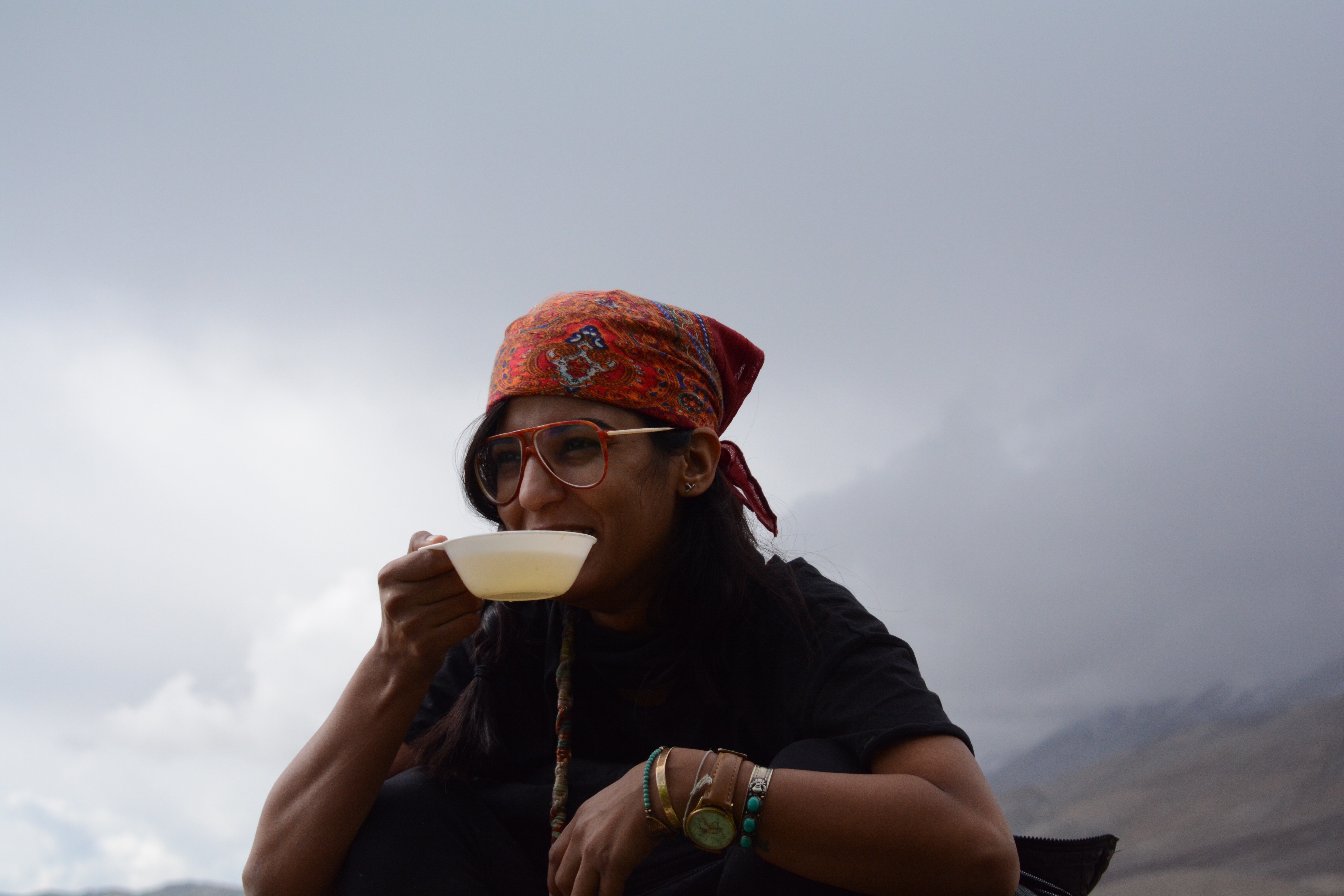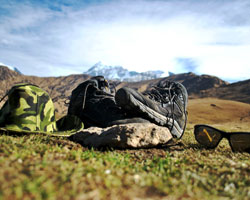If you are looking to up your game and start trekking independently – Nag Tibba is the perfect trek to start with.
The Himalayas are one of the best classrooms for budding mountaineers and explorers. The amount of skills you learn while trekking is unbelievable. You don’t just learn how to survive in the mountains, but also a whole lot about teamwork and the threshold of your inner strength.

If you are ready to venture out on your own, let’s get you prepped.
First things first, let me explain why you must start your independent outdoor journey with Nag Tibba:
a) It’s an easy yet challenging trek: Now, what do I mean by that? Although the trek is easy, the trail is not well marked. So, even as an easy trek, it is bound to throw a few challenges your way. You will easily reach the base camp near Nag Mandir but the trail from there is through a dense forest up till the top. You will have to either rely on GPS coordinates to get there or hire at least a local guide to make sure you don’t get lost on the way. It is a good lesson in trail navigation.
b) Mountain Sickness: The entire trail is within tree line, so the possibility of AMS and other altitude-related health hazards is extremely low. The maximum altitude on the trail is just about 3,000M at Nag Tibba top, and you don’t even camp there.
c) Close proximity to villages: There are villages close by, so in any case of emergency, you can head back the same day and there is ample of help available just in case you might need it.

Now, let’s get to the real stuff! Here is everything you need to keep in mind in order to do this trek on your own.
1. Know the trail inside out:
Now, this is where your experience comes in. You are going to be your own guide for the next few days, on a trail unknown to you. Do your research well. Even if you hire a local guide, try taking the lead and only take the guide’s help if you feel you are going the wrong way.
A. Pick your route:
There are several routes you can choose from, depending on the time you have at hand and the weather. The two most popular routes are:
- Pantwari to Nag Tibba to Pantwari (2-3 days)
- Pantwari to Nag Tibba to Auntar (3 days)
We took the second route in order to avoid any overlap in campsites and it was absolutely blissful. The views you get on your way to Auntar are very distinct as compared to the first day. Here is a visual guide that should give you a fair idea of the landscapes and the trail you will walk through.
You will also need to get permissions from the forest department at Pantwari or Auntar, depending on your starting point. Although, there aren’t really any checkpoints, if the forest officials do catch you without permits, they could fine you. So you might as well play it safe and get these done. They are easy to obtain, too, so it’s really not much of a hassle.
Here are the names of the Forest Officers in both villages:
Rajendar Singh Rawat (Pantwari)
Surender Gaud (Auntar)
B. Water Sources:
Water sources are extremely important on the trek to Nag Tibba, especially because they are so scarce. Everyone must carry at least 2 liters of water before heading out. There are three main water sources from Pantwari to Auntar – Katiyani, Nag Mandir and Gujhit.
Below is a picture of Katiyani water point, right after Goat Village resort, en route to the base camp from Pantwari.

At Nag Mandir campsite, you have two water sources, one is a well at Nag Mandir, but sometimes the water in it is not very clean. The second is 200 metres inside the forest. Follow the arrow shown in the picture below.

I don’t have the picture of Ghujit water point at this point, which is the only water source in summers from the Nag Mandir campsite to Auntar. But I will try to get a picture of Ghujit soon and update this blogpost.
(Picture to be uploaded soon)
C. Weather Conditions:
Nag Tibba can be done anytime during the year. The weather in summers (April – Sept) varies from 8-25 degrees and drops down to -5 to 15 degrees in winters (December to March). Check the weather conditions before leaving and pack accordingly.
D. Camping Spots:
Your camping spots need to have a source of water close by for you to be able to cook your meals, freshen up and wash your dishes. Recommended camping spots are Katiyani, Nag Mandir campsite and Ghujit. It is also recommended to camp in meadows rather than the ridgeline or the forests found on the trail, as they are prone to thunderstorms and lightning.
2. What medicines must you carry in your first-aid kit?
Make sure your first aid kit is well equipped yet compact. Carry everything in small quantities, enough for yourself and your group for the duration of the trek.
- For cuts and wounds: cotton, antiseptic cream, band aids
- For ailments: Norflox Tz (to relieve an upset stomach), Paracetamol (for headaches/fevers), Combiflam (that works as a painkiller), Chest and cold tablets (for minor flu), Volini pain relief spray, zandu balm and ORS rehydration solution.
- For injuries and sprains: Ankle/knee support, crepe bandage and triangular bandage (that can be used to create a sling in case of an injured arm).
3. Know your rescue options
The forests around this trek are dense; without GPS coordinates, the probability of getting lost is quite high as there are a lot of routes that lead to different villages.
Inform someone about your excursion at Pantwari or Auntar before leaving. Exchange numbers with one of the locals and also provide them with an emergency contact number just in case they don’t hear from you. You should also know how far the nearest hospital from your starting and end point is. Again, knowledge is key here. Go prepared, but don’t assume the worst.
4. Cellular Connectivity
You get network at various points during the trek, mostly near Nag Mandir, Nag Tibba Top and Ghujit near Auntar. All networks have a good range on this trek.
5. What technical gear to carry in winters and where to get it?
Between Jan-March, you might come across snow in patches or you might end up walking knee-deep in snow, depending on the snow conditions that year.
Check the weather forecast and carry microspikes, gaiters and trekking poles, if there is plenty of snow. You can rent everything from Pantwari village or Dehradun.
6. Respect the local traditions and culture
Nag Tibba holds religious importance for the locals of the neighbouring villages. It is considered disrespectful to have any kind of meat (including eggs) on the trail, owing to its proximity to Nag Mandir. Be mindful of that and pack your food items accordingly.

7. Don’t drink alcohol
Alcohol can be extremely dangerous in the mountains. It dehydrates you and leads to injuries and falls. So, a gentle reminder to avoid alcohol up in the mountains for your own safety.
That’s pretty much it. We hope this helps you plan your first solo trip outdoors a little better.
From all of us at Bikat Adventures – have a safe and epic journey.
Find out more about Nag Tibba here.
This article was originally written by Pooja Dhiman on 12-01-2018.
It was edited and updated by Neeti Singhal on 08-11-2023.






